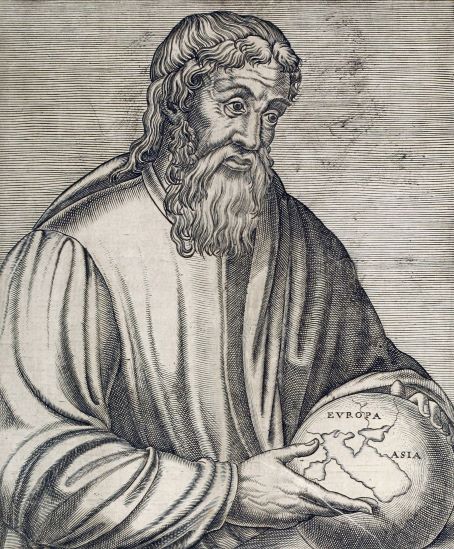Teaching Geography and Multiliteracy
Alternatives of multimodal didactic resources with the hydrological cycle
DOI:
https://doi.org/10.53455/re.v4i1.110Keywords:
: Multiliterate Pedagogical Practices, Game, Teaching and learningAbstract
Context: This work is linked to the discipline "Geography, Multimodality and Multiliteracy" (GCC1109) at the Federal University of Santa Maria (UFSM). In accordance with the proposal of the discipline, the general objective is to understand how the application of multiliteracy-based activities can contribute to the teaching and learning process of students in basic education in a public school in the municipality of Santa Maria (SM). Methodology: The work was structured through bibliographic and qualitative research, through the analysis of questionnaires applied to students in basic education in the Municipality of Santa Maria/RS. The materials produced and applied were structured through content on the Hydrological Cycle, based on multiliteracy pedagogical practices (PPM). The PPMs were divided into four moments: in moment 1, slides on content related to the hydrological cycle were presented and discussed; in moment 2, a basin and cabbage leaves were used to represent watersheds, as well as the experience with hot and cold water to represent evaporation, condensation, and precipitation; in moment 3, a water cycle game inspired by the Game of Life was played; in moment 4, the validation of multiliteracy practices was carried out through questionnaires. Considerations: In summary, through the analysis and discussions, multimodal didactic resources contributed both to the teaching and learning process of the participating students, and to the teaching construction process of the organizing undergraduate students of the PPMs presented in this work.
Downloads
References
Batista, N. L. (2019). Cartografia Escolar, Multimodalidade e Multiletramentos para o ensino de Geografia na Contemporaneidade (Doctoral dissertation, Universidade Federal de Santa Maria).
Batista, N. L., Becker, E. L. S., & Cassol, R. (2019). Multiletramentos e Multimodalidade na Cartografia Escolar para o ensino de Geografia: considerações gerais. Para Onde!?, 12(2), 01-10. https://doi.org/10.22456/1982-0003.97186 DOI: https://doi.org/10.22456/1982-0003.97186
Bevilaqua, R. (2013). Novos estudos do letramento e multiletramentos: divergências e confluências. RevLet–Revista Virtual de Letras, 5(01), 99-114.
Brandão, C. R. (2008). Minha Casa o Mundo. Aparecida-SP: Idéias & Letras.
Brands, A. R.. Savian, C.P., Spode, P.L.C., Batista, N.L. (2022). Onde a geografia está? Nos livros e na vida! Multiletramentos e o incentivo à leitura como prática geoescolar. Revista Ensino de Geografia (Recife), 5(3), p. 168-187. https://doi.org/10.5016/estgeo.v20i1.16332 DOI: https://doi.org/10.51359/2594-9616.2022.254414
Castellar, S. M. V. (2017). Cartografia escolar e o pensamento espacial fortalecendo o conhecimento geográfico. Revista Brasileira de Educação em Geografia, 7(13), 207-232. https://doi.org/10.46789/edugeo.v7i13.494 DOI: https://doi.org/10.46789/edugeo.v7i13.494
Dos Santos, V. C., Rizzatti, M., Petsch, C., & Batista, N. L. (2022). O QUE NÃO É CRINGE NO ENSINO DE GEOGRAFIA?. Estudos Geográficos: Revista Eletrônica de Geografia, 20(1), 58-80. https://doi.org/10.5016/estgeo.v20i1.16332 DOI: https://doi.org/10.5016/estgeo.v20i1.16332
Gracioli, J. M. A. (2017). Multiletramentos e leitura de mapas no ensino de Geografia. (Dissertação Mestrado em Educação, Universidade Federal do Triângulo Mineiro). Biblioteca Digital de Teses e Dissertações (UFTM). http://200.131.62.27/handle/tede/451.
Lobato, R. B. (2020). Multiletramentos na Cartografia. Rio de Janeiro. (Tese Doutorado em Ciências – Geografia, Universidade Federal do Rio de Janeiro).
Monteiro, L. M. T. (2020). Multimodalidade: o conceito de multiletramento e a prática pedagógica. Caderno de Ensino, Linguagens e suas Tecnologias, 1(1), 83-93.
Oliveira, G. A. (2017). Por uma Pedagogia dos Multiletramentos – Ontem, Hoje e Sempre. Horizontes, 35(2), 108–111. https://doi.org/10.24933/horizontes.v35i2.490 DOI: https://doi.org/10.24933/horizontes.v35i2.490
Oliveira, T. P. de, & Lopes, C. S. (2019). O uso de jogos por professores de Geografia na Educação Básica. Ateliê Geográfico, 13(3), 66–83. https://doi.org/10.5216/ag.v13i3.55143 DOI: https://doi.org/10.5216/ag.v13i3.55143
Pissinati, M. C., & Archela, R. S. (2007). Fundamentos da alfabetização cartográfica no ensino de Geografia. Geografia (Londrina), 16(1), 169-195.
Rizzatti, M. (2022). Cartografia Escolar, Inteligências Múltiplas e Neurociências no Ensino Fundamental: a Mediação (Geo)Tecnológica e Multimodal no Ensino de Geografia. (Tese Doutorado em Geografia, Universidade Federal de Santa Maria). Biblioteca Digital de Teses e Dissertações (BDTD UFSM). https://repositorio.ufsm.br/handle/1/24075.
Rizzatti, M., Becker, E., Cassol, R., & Batista, N. (2023). Cartografia temática e métodos de representação: uma revisão teórica. Estrabão, 4(1), 92–111. https://doi.org/10.53455/re.v4i.77 DOI: https://doi.org/10.53455/re.v4i.77
Rojo, R. H. R. (2013). Escola conectada: os multiletramentos e as TICs. São Paulo: Parábola.
Spode, P. L. C., Nyland, V., Rizzatti, M., & Batista, N. L. (2022). Multiletramentos, ensino de Geografia e Lugar: aplicações e possibilidades. Revista Ensino De Geografia (Recife), 5(2), 117–137. https://doi.org/10.51359/2594-9616.2022.253105 DOI: https://doi.org/10.51359/2594-9616.2022.253105
Souza, K. R., Marques, T. B., & Brait, L. R. F. (2008). O papel dos jogos e brincadeiras no processo de ensino-aprendizagem nas aulas de educação física nas séries iniciais do ensino fundamental: uma abordagem construtivista Piagetiana. Anais dos XXIV Congresso de Pedagogia, 24(1).
Downloads
Published
How to Cite
Issue
Section
License
Copyright (c) 2023 Franciele Delevati Ben, Jheiny Carolina Amarante de Souza, Natália Lampert Batista

This work is licensed under a Creative Commons Attribution 4.0 International License.
The magazine follows the Creative Commons (CC BY) standard, which allows the remix, adaptation and creation of works derived from the original, even for commercial purposes. New works must mention the author(s) in the credits.













